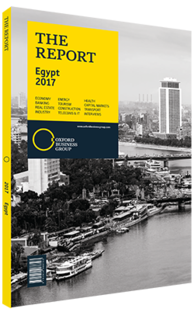Egypt's bancassurance regulatory framework among most flexible in region
The recent history of bancassurance in Egypt has at times been a troubled one. While the concept was enthusiastically adopted in the period of sustained economic growth leading up to 2008, the pace of the industry’s expansion exposed a number of weaknesses. Chief among these were a lack of adequately trained staff and an increasing amount of mis-selling. In 2008 these issues were deemed serious enough by the Central Bank of Egypt (CBE) that it imposed a moratorium on the forming of new bancassurance relationships between lenders and insurance companies.
Legal Overlap
Part of the challenge of addressing the problems associated with bancassurance activity was the issue of regulatory coverage. Banks in Egypt are supervised by the CBE, while non-bank financial activity falls under the purview of the Egyptian Financial Supervisory Authority (EFSA).
Coordination between regulatory bodies is always a complex and time-consuming process, and in this case the efforts of the CBE and EFSA were further hindered by the revolution of 2011 and the political and economic turbulence that followed. This period of uncertainty was brought to an end in May 2013, when the CBE – in cooperation with EFSA – issued a decision regarding the rules by which banks were to carry out bancassurance activities. A month later, EFSA’s board of directors published its component of the agreement, effectively an amendment to its earlier rules governing the marketing of insurance products through licensed banks. Central to this new compact was an undertaking by both institutions to strengthen insurance intermediaries by providing training courses and establishing a test process as a basic condition for the granting of a licence to practice in the profession.
The new bancassurance framework is relatively liberal by regional standards. Unlike markets such as Saudi Arabia, where banks and insurers are compelled to establish a third entity through which to carry out their shared operations, Egypt has adopted a straight-forward distribution model. There has also been a loosening in the number of tie-ups a bank can agree to with insurance companies. Under the old regime, a bank was permitted to partner with one general insurer and one life insurer, which was more relaxed stricture than the single tie-up arrangements in some MENA markets. Egypt’s new bancassurance framework provides even greater scope for partnerships, allowing banks to tie up with one general insurer, one life insurer, one general takaful operator and one family takaful company. This apparent embrace of the sharia-compliant insurance model is a significant development in the context of a market which has been slower to embrace the model than its GCC counterparts.
Net Gains
Banks, insurance companies and customers stand to benefit from the new regulatory framework. For banks, utilising their branch networks to sell insurance products offers the promise of greater margins. There is also a brand enhancement aspect: by providing a wider array of products, banks can make themselves more attractive to customers and improve customer retention. For insurance companies, bancassurance represents a powerful distribution channel, allowing them to take advantage of the infrastructure assets of their banking partners. In some cases, a little-known insurance company can benefit by pairing with a high-profile and trusted banking institution, gaining a reputational boost by association with a better-known partner. Using a bank’s branch network also allows insurers to penetrate a market more rapidly, while leveraging the bank-customer relationship results in lower customer acquisition costs.
For customers, bancassurance appeals by providing access to a wider array of services from a single point. This is especially advantageous in systems like Egypt’s, which allow banks to partner with more than one insurance company. Egypt’s new bancassurance model, therefore, has established this distribution channel as one of the market’s most promising growth avenues.
You have reached the limit of premium articles you can view for free.
Choose from the options below to purchase print or digital editions of our Reports. You can also purchase a website subscription giving you unlimited access to all of our Reports online for 12 months.
If you have already purchased this Report or have a website subscription, please login to continue.

